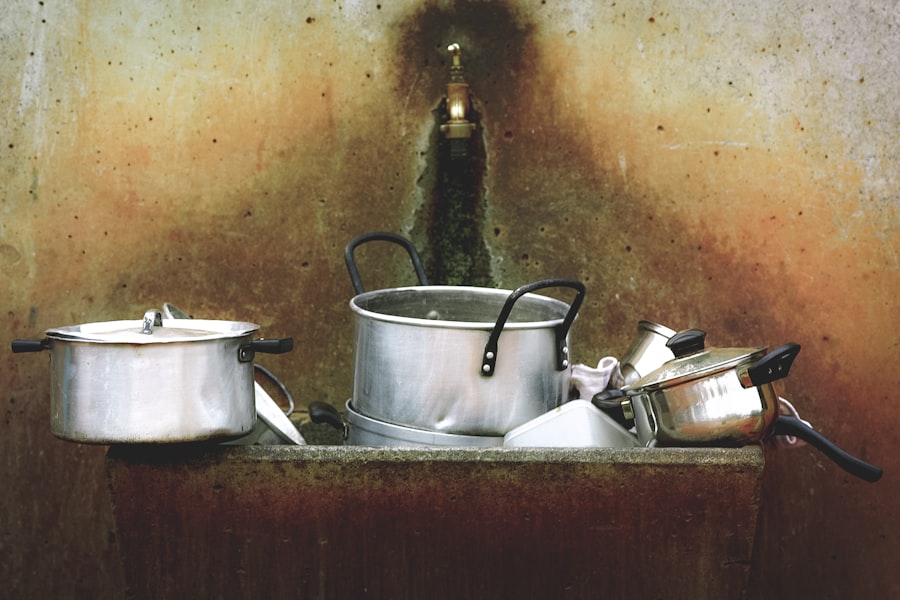The use of robotic floor cleaners in healthcare settings has evolved significantly over the years. Initially, these machines were simple and had limited capabilities. However, with advancements in technology, they have become more sophisticated and effective in cleaning hospital floors.
The history of robotic floor cleaners in healthcare can be traced back to the early 2000s when the first prototypes were introduced. These early models were primarily used in industrial settings but soon found their way into hospitals due to their potential for improving cleanliness and reducing labor costs.
Over time, these machines have undergone significant improvements. They are now equipped with advanced sensors and mapping technology that allows them to navigate through complex hospital environments without human intervention. They can detect obstacles, avoid collisions, and efficiently clean large areas.
Benefits of Robotic Floor Cleaners in Hospital Settings
The use of robotic floor cleaners in hospitals offers numerous benefits. Firstly, these machines improve cleanliness by effectively removing dirt, dust, and other contaminants from hospital floors. They are designed to reach areas that are difficult to clean manually, such as under beds and furniture. This ensures that the entire floor surface is thoroughly cleaned, reducing the risk of infection.
Research has shown that robotic floor cleaners can significantly reduce the presence of harmful pathogens in hospital environments. A study conducted by the University of California, San Francisco found that the use of robotic floor cleaners reduced the number of bacteria on hospital floors by 80%. This is a significant improvement in cleanliness and can greatly contribute to patient safety.
In addition to improved cleanliness, robotic floor cleaners also offer increased efficiency. These machines can clean large areas in a fraction of the time it would take a human cleaner. They can work continuously without breaks or fatigue, ensuring that hospital floors are always clean and hygienic.
Advantages of Using Robotic Floor Cleaners over Traditional Cleaning Methods
When comparing robotic floor cleaners to traditional cleaning methods, several advantages become apparent. Firstly, robotic floor cleaners are much faster than human cleaners. They can cover large areas in a short amount of time, allowing hospitals to maintain cleanliness without disrupting patient care.
Furthermore, robotic floor cleaners offer a higher level of precision and consistency compared to manual cleaning methods. These machines are programmed to follow specific cleaning patterns, ensuring that every inch of the floor is thoroughly cleaned. Human cleaners may miss certain areas or be inconsistent in their cleaning techniques, which can compromise hygiene standards.
Another advantage of using robotic floor cleaners is their ability to operate autonomously. Once programmed and set up, these machines can work without constant supervision. This frees up human cleaners to focus on other important tasks, such as disinfecting high-touch surfaces or attending to patient needs.
How Robotic Floor Cleaners Improve Hospital Safety and Hygiene
| Advantages of Using Robotic Floor Cleaners over Traditional Cleaning Methods |
|---|
| 1. Efficiency: Robotic floor cleaners can clean floors faster and more efficiently than traditional cleaning methods. |
| 2. Consistency: Robotic floor cleaners can clean floors consistently, ensuring that every inch of the floor is cleaned thoroughly. |
| 3. Cost-effective: Robotic floor cleaners can save money in the long run by reducing labor costs and increasing productivity. |
| 4. Improved safety: Robotic floor cleaners can reduce the risk of slip and fall accidents by keeping floors clean and dry. |
| 5. Remote monitoring: Robotic floor cleaners can be monitored remotely, allowing for real-time updates and adjustments. |
| 6. Eco-friendly: Robotic floor cleaners use less water and cleaning solution than traditional cleaning methods, making them more environmentally friendly. |
Robotic floor cleaners play a crucial role in maintaining a safe and hygienic environment in hospitals. These machines are designed to effectively remove dirt, dust, and pathogens from floors, reducing the risk of infection. By eliminating these contaminants, hospitals can create a safer environment for patients, staff, and visitors.
In addition to reducing the risk of infection, robotic floor cleaners also contribute to improved patient outcomes. Research has shown that hospital-acquired infections are a significant cause of morbidity and mortality among patients. By using robotic floor cleaners to maintain cleanliness, hospitals can reduce the transmission of pathogens and prevent these infections from occurring.
Furthermore, robotic floor cleaners can help prevent slips, trips, and falls in hospitals. These machines are equipped with sensors that allow them to detect obstacles and navigate around them. By keeping hospital floors clean and dry, they reduce the risk of accidents and injuries.
Maximizing the Efficiency of Robotic Floor Cleaners in Hospital Settings
To maximize the efficiency of robotic floor cleaners in hospital settings, proper scheduling, maintenance, and training are essential. Firstly, hospitals should develop a cleaning schedule that ensures regular and thorough cleaning of all areas. This will help prevent the buildup of dirt and contaminants on floors.
Maintenance is also crucial to ensure that robotic floor cleaners operate at their optimal level. Regular cleaning and inspection of the machines will help identify any issues or malfunctions that need to be addressed. Additionally, proper training should be provided to staff members who will be operating or supervising the robotic floor cleaners. This will ensure that they are familiar with the machines’ capabilities and can effectively integrate them into existing cleaning protocols.
Overcoming Challenges in Implementing Robotic Floor Cleaners in Hospitals

Implementing robotic floor cleaners in hospitals may come with certain challenges. One common challenge is resistance from staff members who may fear that these machines will replace their jobs. It is important to address these concerns by emphasizing that robotic floor cleaners are meant to complement human cleaners, not replace them. These machines can take care of routine cleaning tasks, allowing human cleaners to focus on more specialized and critical tasks.
Another challenge is integrating robotic floor cleaners into existing cleaning protocols. Hospitals may already have established cleaning routines and procedures, and it is important to ensure that the use of robotic floor cleaners aligns with these protocols. This can be achieved through proper training and communication with staff members.
Training and Maintenance of Robotic Floor Cleaners in Healthcare Facilities
Proper training and maintenance are crucial for the effective and efficient use of robotic floor cleaners in healthcare facilities. Staff members who will be operating or supervising these machines should receive comprehensive training on their operation, maintenance, and safety protocols. This will ensure that they can effectively utilize the machines and troubleshoot any issues that may arise.
Regular maintenance is also essential to keep robotic floor cleaners in optimal condition. This includes cleaning the machines after each use, inspecting them for any damage or malfunctions, and replacing worn-out parts as needed. By following a regular maintenance schedule, healthcare facilities can prolong the lifespan of their robotic floor cleaners and ensure that they continue to operate at their best.
Cost-Effectiveness of Robotic Floor Cleaners in Hospital Cleaning
While the initial investment in robotic floor cleaners may be higher compared to traditional cleaning methods, these machines can save healthcare facilities money in the long run. Firstly, they reduce labor costs by minimizing the need for human cleaners to perform routine cleaning tasks. This allows hospitals to allocate their human resources more efficiently, focusing on tasks that require specialized skills or attention.
Additionally, robotic floor cleaners contribute to improved cleanliness, which can lead to cost savings in terms of reduced infection rates and shorter hospital stays for patients. Hospital-acquired infections are not only detrimental to patient health but also result in increased healthcare costs. By using robotic floor cleaners to maintain cleanliness and reduce the risk of infection, hospitals can save money on treatment and care for infected patients.
The Future of Hospital Cleaning: The Role of Robotic Floor Cleaners
The future of hospital cleaning is undoubtedly intertwined with the use of robotic floor cleaners. As technology continues to advance, these machines will become even more sophisticated and effective in maintaining cleanliness and hygiene in healthcare facilities. We can expect to see further improvements in their navigation capabilities, cleaning efficiency, and integration with other cleaning technologies.
In conclusion, robotic floor cleaners have emerged as a revolutionary solution to the challenges faced by healthcare facilities in maintaining cleanliness and hygiene. These machines offer numerous benefits, including improved cleanliness, reduced risk of infection, increased efficiency, and cost savings. By implementing robotic floor cleaners in their cleaning protocols, hospitals can create a safer and healthier environment for patients, staff, and visitors. It is crucial for healthcare facilities to consider the use of these machines and invest in proper training and maintenance to maximize their effectiveness.
Looking for the best robotic floor cleaner for your hospital facility? Look no further than Floorbotics! In a recent article on their website, they discuss the importance of optimizing robotic floor cleaners for hospital use. They provide valuable insights on how to maximize the efficiency and effectiveness of these machines in maintaining a clean and hygienic environment. From understanding the unique cleaning requirements of different areas within a hospital to utilizing the latest technological advancements, Floorbotics offers comprehensive guidance. To learn more about their expertise and explore their range of robotic floor cleaners, visit their website at https://floorbotics.com.au/. You can also check out their sitemap at https://floorbotics.com.au/sitemap.html for easy navigation through their informative articles and product offerings.
FAQs
What are robotic floor cleaners for hospitals?
Robotic floor cleaners for hospitals are autonomous machines designed to clean and sanitize hospital floors without human intervention. They use sensors and algorithms to navigate around obstacles and clean floors efficiently.
What are the benefits of using robotic floor cleaners in hospitals?
Robotic floor cleaners in hospitals offer several benefits, including improved cleaning efficiency, reduced labor costs, increased safety, and improved infection control.
How do you optimize the use of robotic floor cleaners in hospitals?
To optimize the use of robotic floor cleaners in hospitals, it is important to ensure that the machines are properly maintained, regularly cleaned, and used in conjunction with other cleaning methods. It is also important to train staff on how to use the machines effectively and to monitor their performance to ensure that they are meeting cleaning standards.
What factors should be considered when selecting a robotic floor cleaner for a hospital?
When selecting a robotic floor cleaner for a hospital, factors such as cleaning performance, battery life, noise level, and ease of use should be considered. It is also important to choose a machine that is compatible with the hospital’s cleaning protocols and that can be easily integrated into existing cleaning routines.
Are robotic floor cleaners safe to use in hospitals?
Robotic floor cleaners are generally safe to use in hospitals, as they are designed to operate autonomously and avoid obstacles. However, it is important to ensure that the machines are properly maintained and that staff are trained on how to use them safely. It is also important to monitor the machines’ performance to ensure that they are not causing any damage to hospital floors or equipment.

